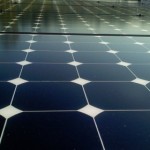The full text of the World Trade Organization (WTO) judgment on India-U.S. solar case was finally been made public on Feb 24, three years after the U.S. challenged New Delhi’s policy for solar projects to source at least half their content from local producers to qualify for Indian government support and encourage domestic manufacture. The judgment prevents India from doing so, and concludes that the domestic content requirements set by India for the initial phases of its National Solar Mission, violate international trade agreements. It recommends that India ‘bring its measures into conformity with its obligations under the TRIMs Agreement and the GATT 1994’[1].
In the particular, the judgment is not a negative for India, as buying solar equipment at this time may be better than building plants that make it, given rapid evolution of technology and the financial problems of our power sector. But in the general, this judgment is harmful, as it brings into consideration the larger issues of climate change politics and global trade regimes which create distortions that favor rule-makers. Even India’s Power Minister Piyush Goyal has called out at a conference in Delhi this week, the hypocrisy of the U.S. position which violates the spirit of the climate change talks.
This is where India must get proactive.
In the recently concluded Paris Climate Talks, India was painted as a spoiler for not agreeing to take responsibility for climate change caused by the developed world and China[2]. There was pressure on India to renounce coal – a critical and cheap energy source compared to the more expensive solar energy.
Despite bearing little responsibility for climate change, India still voluntarily declared climate change mitigation goals, including a target of 100,000 megawatts of solar power capacity by 2022[3]. This is a $50 billion opportunity for solar equipment-makers worldwide – and given the WTO judgment, India will not be able to leverage it to create a domestic solar manufacturing base. Instead, the high-tech manufacturing jobs will be created elsewhere – in places such as the U.S. While climate change talks and WTO are independent of each other, the two combined have managed to generate an outcome that favors markets like the U.S.
A similar maneuver is underway on the nuclear energy front, where India proposes to build eight new nuclear power plants – two of which are with U.S. collaboration[4]. These have run into a dead end over India’s nuclear liability law which holds suppliers responsible for accidents – a dispute now six years old.
Here again, the language opposing the Indian law is legal double-speak. Rather than saying ‘India shouldn’t penalize suppliers of faulty equipment’, the wording is ‘India’s law is not in line with international liability regime’. The U.S. had a key role in creating this international liability regime, and in a remarkable coincidence, the international regimes seem to favor U.S. suppliers over Indian victims of a potential disaster.
Overcoming this requires India to deepen its participation in international rule-making regimes be it trade, climate change or nuclear energy. This becomes essential as India moves from being a passive global participant, into being an active economy in the new technological era, with interests to protect.
For instance, after solar panels, the next big shifts in renewable/clean energy will be in battery technology and electric vehicles. Unlike solar panels, India does have a manufacturing base in both these industries and stands to lose much if imports dominate these sectors. To prevent a repeat of the solar case, India must now challenge the status quo in trade rules in renewable/clean energy, beyond it being a free trade issue.
The forum where this can be done is the G20, the group of 20 large economies, with its multiple working groups, including the Energy Sustainability Working Group and one on climate finance. The smaller grouping of seven industrialized nations, the G7, in its 2014 communiqué’ mentions the ‘Green Climate Fund’, which will mobilize $100 billion a year by 2020 to fund climate change mitigation and adoption measures[5]. This fund, set up under the United Nations Framework Convention on Climate Change and is global in scope, is operational. But so far just just $10.2 billion has been raised, and specific technology measures are not on its agenda.
Buying promising renewable, clean technology and making it available affordable should officially be a part of climate finance mechanisms. This is what India can champion through the G20, in line with the G20 principles on energy collaboration to ‘Encourage and facilitate design, development, demonstration and widespread deployment of innovative energy technologies, including clean energy technologies’[6].
Energy, where India is both vulnerable (oil) and leading in the climate change debates, is a good place for India to begin playing a pro-active, positive multilateral role. It will help us develop an expertise and become the scribe for fairer global regimes.
Amit Bhandari is Fellow, Energy & Environment Studies, Gateway House.
Kunal Kulkarni is a Senior Researcher at Gateway House.
This article was exclusively written for Gateway House: Indian Council on Global Relations. You can read more exclusive content here.
For interview requests with the author, or for permission to republish, please contact outreach@gatewayhouse.in.
© Copyright 2016 Gateway House: Indian Council on Global Relations. All rights reserved. Any unauthorized copying or reproduction is strictly prohibited
References
[1] World Trade Organization,India – Certain Measures Related to Solar Cells and Solar Modules, 24 February, 2016, <https://docs.wto.org/dol2fe/Pages/FE_Search/FE_S_S006.aspx?Query=(@Symbol= wt/ds456/*)&Language=ENGLISH&Context=FomerScriptedSearch&languageUIChanged=true#>
[2] DNA, India Slams US Secretary of State John Kerry on Upcoming Paris Climate Meet, 22 November 2015, <http://www.dnaindia.com/india/report-india-slams-us-secretary-of-state-john-kerry-on-upcoming-paris-climate-meet-2147760>
[3] Press Information Bureau, Year End Review – Solar Power Target Reset to One Lakh MW, 15 December, 2015, <http://pib.nic.in/newsite/PrintRelease.aspx?relid=133220>
[4] Lok Sabha, 16 December, 2015, <http://164.100.47.192/Loksabha/Questions/QResult15.aspx?qref=27095&lsno=16>
[5] G7 Germany, The Brussels G7 Summit Declaration, 4 June 4, 2014, <https://www.g7germany.de/Content/DE/_Anlagen/G8_G20/G7-2014-06-05-abschlusseklaerung-eng.pdf?__blob=publicationFile&v=6>
[6] G20 Principles on Energy Collaboration, 16 November, 2014. <www.g20.utoronto.ca/2014/g20_principles_energy_collaboration.pdf>


